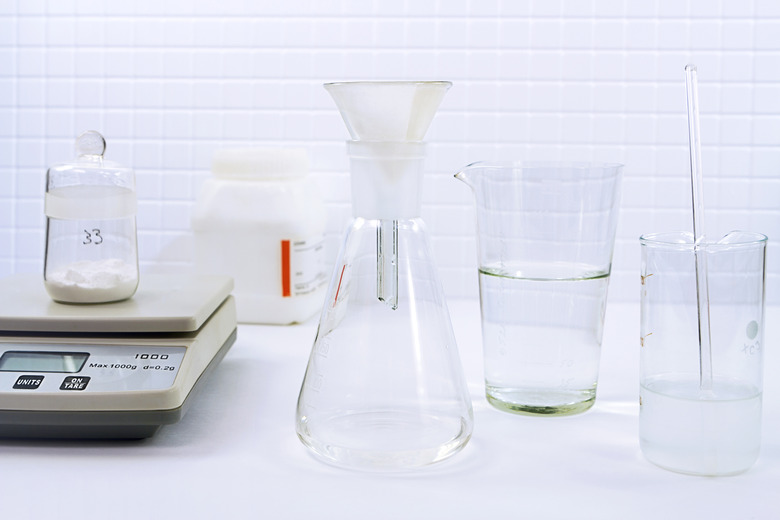How To Find The Number Of Representative Particles In Each Substance
Many chemistry students have to calculate the number of representative particles in a substance. A substance has a definite chemical composition with a corresponding chemical formula. Representative particles can be atoms, molecules, formula units or ions, depending on the nature of the substance. The standard unit used to represent the amount of a substance is the mole, where 1 mole contains 6.02 x 10^23 particles. This quantity is referred to as Avogadro's number.
1. Measure Mass
Measure the mass of the substance in grams. For example, you weigh a sample of water and its mass is 36.0 grams.
2. Calculate Molar Mass
Calculate the molar mass of the substance. Add the average atomic masses of the individual atoms in the chemical formula, as per the periodic table. For example, the molar mass for water is 18.0 grams per mole. Water is made of two hydrogen atoms, each weighing 1.0 gram, and one oxygen atom, weighing 16.0 grams.
3. Divide Mass by Molar Mass
Divide the mass measured in Step 1 by the molar mass determined in Step 2. This will change the unit of the substance to moles. Following the example, 36.0 grams ÷ 18.0 grams/mole = 2 moles of water.
4. Multiply by Avogadro's Number
Multiply the value obtained in Step 3 by Avogadro's number, which represents the number of representative particles in a mole. Avogadro's number has a value of 6.02 x 10^23. Continuing the example, 2 moles of water x 6.02 x 10^23 particles per mole = 1.20 x 10^24 particles.
Things Needed
- Scale
- Periodic Table
- Scientific calculator
TL;DR (Too Long; Didn't Read)
The number of significant digits used in molar mass calculation and to calculate the number of representative particles depends on the number of significant digits in which the mass is measured. The number of significant digits in the answer to a calculation cannot exceed the number of significant digits in the mass measurement. If you know the number of moles of a substance, then you only complete Step 4 in order to calculate representative particles.
Cite This Article
MLA
Gonsoir, Kristen. "How To Find The Number Of Representative Particles In Each Substance" sciencing.com, https://www.sciencing.com/number-representative-particles-substance-8400644/. 4 June 2018.
APA
Gonsoir, Kristen. (2018, June 4). How To Find The Number Of Representative Particles In Each Substance. sciencing.com. Retrieved from https://www.sciencing.com/number-representative-particles-substance-8400644/
Chicago
Gonsoir, Kristen. How To Find The Number Of Representative Particles In Each Substance last modified August 30, 2022. https://www.sciencing.com/number-representative-particles-substance-8400644/
